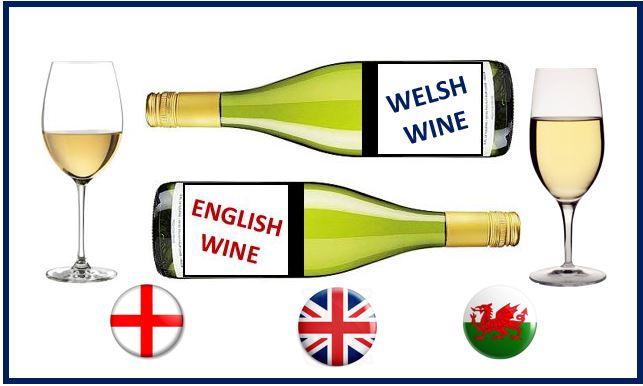Many British wine-making areas will soon rival the Champagne region of France say researchers. Researchers from the University of East Anglia say that English and Welsh vineyards are not only booming, but they’re also winning international acclaim.
Viticulture and climate experts have identified almost 35,000 hectares of prime viticultural land for expanding current vineyards or creating new ones. Many of the areas they detected are in East Anglia, Sussex, and Kent.
Viticulture is the cultivation and harvesting of grapes. It is a branch of horticulture.
Alastair Nesbitt, Stephen Dorling, and Andrew Lovett wrote about their study and findings in the Journal of Land Use Science (citation below).
Dorling is a Professor of Meteorology at the University of East Anglia’s School of Environmental Sciences. Lovett is a Professor of Geography, also at East Anglia’s School of Environmental Sciences. Dr. Nesbitt, from Climate Wine Consulting Ltd., is a leading climate and viticulture expert.
British wine-making ‘booming’
Prof. Dorling said:
“English and Welsh vineyards are booming, and their wine is winning international acclaim. This summer’s heatwave has led to a record grape harvest and a vintage year for English and Welsh wine, prompting great interest in investment and land opportunities.”
“But despite a trend of warming grape-growing seasons, this season has been quite unusual in terms of weather.”
“English and Welsh grape yields are generally quite low and variable by international standards, so we wanted to identify the best places to plant vineyards and improve the sector’s resilience to the UK’s often fickle weather.”
The researchers along with wine producers used new geographical analysis techniques to grade land in England and Wales. They assessed and graded every 50m x 50m plot for suitability.

British wine-making possible in many areas
Lead author Dr. Nesbitt said:
“Interestingly, some of the best areas that we found are where relatively few vineyards currently exist such as in Essex and Suffolk – parts of the country that are drier, warmer and more stable year-to-year than some more established vineyard locations.”
“The techniques we used enabled us to identify areas ripe for future vineyard investments, but they also showed that many existing vineyards are not that well located, so there is definitely room for improvement and we hope our model can help boost future productivity.”
Entering the viticulture and wine-making business in England and Wales requires significant investment. It is not for people who are risk-averse or faint-hearted, says Dr. Nesbitt. In other words, not only do you have to be willing to take risks but also invest a lot of money.
Global warming and British wine-making
Dr. Nesbitt added:
“But as climate change drives warmer growing season temperatures in England and Wales, this new viticulture suitability model allows, for the first time, an objective and informed rapid assessment of land at local, regional and national scales.”
Citation
“A suitability model for viticulture in England and Wales: opportunities for investment, sector growth and increased climate resilience,” A. Nesbitt, S. Dorling, & A. Lovett. Journal of Land Use Science, Volume 13, 2018 – Issue 4. DOI: 10.1080/1747423X.2018.1537312.

